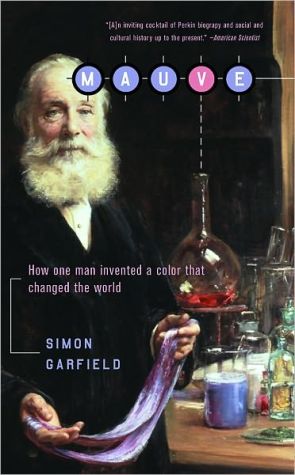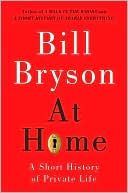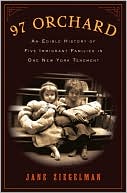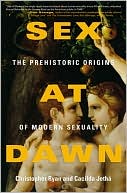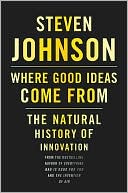Mauve: How One Man Invented a Color that Changed the World
"Garfield's engaging story of William Perkin's accidental discovery is an informative mix of science, history, and biography."—Boston Herald\ In 1856 eighteen-year-old English chemist William Perkin accidentally discovered a way to mass-produce color. In a "witty, erudite, and entertaining" (Esquire) style, Simon Garfield explains how the experimental mishap that produced an odd shade of purple revolutionized fashion, as well as industrial applications of chemistry research. Occasionally...
Search in google:
"Garfield's engaging story of William Perkin's accidental discovery is an informative mix of science, history, and biography."—Boston Herald New York Times - Janet Maslin A book salted with fascinating data
\ From Barnes & NobleThe Barnes & Noble Review from Discover Great New Writers\ Life is full of false starts and wrong turns, but rarely do they have the power to shape history. Mauve is the delightful story of one accident that did. \ William Perkin was, by all accounts, a modest, pleasant Englishman with a talent for chemistry and a mind for research. In 1856, at the tender age of 18, he decided to put his chemistry studies to the test. Malaria was then prevalent in many countries, and the most effective treatment, quinine, was scarce and costly. Aiming to invent a synthetic form of quinine, Perkin instead happened upon an oily black substance that, when purified and dried, became a lovely shade of light purple. In short, he had discovered mauve. More specifically, he had discovered a way to produce color without relying on natural products like plants and bugs, with their limited hues. His experiment transformed fashion, but perhaps more importantly, it was the spark of genius that inspired a sequence of related chemical innovations with far-reaching implications for such industries as cosmetics, photography, and even medicine.\ In Mauve, Simon Garfield recounts the appealing story of Perkin's life, while demonstrating the unexpected value of his simple (some would even say naïve) experiment. We watch Perkin wrestle with the dueling demands of pure science and lucrative commercialism and see him earn well-deserved international acclaim. The result is a refreshing and enlightening story of a man who put his curiosity to the test and scored a big and brightly colored success. (Summer 2001 Selection)\ \ \ \ \ \ Chicago TribuneBy bringing Perkin into the open and documenting his life and work, Garfield has done a service to history.\ \ \ Daily TelegraphIn an engagingly simple manner . . . Garfield takes us by the hand through the mysteries of science. . . . [His] study is far more than a social history of fashion. It has much to tell us about the accidental nature of scientific discoveries . . . and the relationship between science and industry in Victorian times.\ \ \ \ \ Boston HeraldGarfield's engaging story...is an informative mix of science, history, and biography.\ \ \ \ \ American Scientist[A]n inviting cocktail of Perkin biography, account of the dye industry and where it led, and social and cultural history up to the present.\ \ \ \ \ New York Times Book Review[T]he delight of this book is seeing parallels to present-day trends.\ \ \ \ \ New York Times[A] book salted with fascinating data...\ \ \ \ \ [Sunday TimesAlthough Perkin's discovery was a stroke of luck, he was, as Simon Garfield's appreciative biography shows, the kind of exemplary juvenile who was almost bound to make his mark sooner or later.\ \ \ \ \ Associated Newspapers Ltd.Like those excellent and tastefully packaged true stories Longitude and Arcanum, Mauve is a stirring tale of triumph over adversity, of scientific progress made through the extraordinary exertions of a single person.\ \ \ \ \ Marcia BartusiakAn engaging and airy history.\ —New York Times Book Review\ \ \ \ \ Janet MaslinA book salted with fascinating data… \ —New York Times\ \ \ \ \ Daily TelegraphIn an engagingly simple manner . . . Garfield takes us by the hand through the mysteries of science. . . . His study is far more than a social history of fashion. It has much to tell us about the accidental nature of scientific discoveries . . . and the relationship between science and industry in Victorian times.\ \ \ \ \ Kirkus ReviewsGarfield has fashioned a stylish compound of biography, cultural and scientific history, and literary detection....Mauve-lous.\ \ \ \ \ Sunday Times LondonAlthough Perkin's discovery was a stroke of luck, he was, as Simon Garfield's appreciative biography shows, the kind of exemplary juvenile who was almost bound to make his mark sooner or later.\ \ \ \ \ Associated NewspaperLike those excellent and tastefully packaged true stories Longitude and Arcanum, Mauve is a stirring tale of triumph over adversity, of scientific progress made through the extraordinary exertions of a single person.\ \ \ \ \ Library JournalSince his discovery of the first synthetic dye in 1856, interest in William Perkin has undergone a resurgence approximately every 50 years. Garfield's (The End of Innocence: Britain in the Time of AIDS) biography follows in the footsteps of A Jubilee Proceedings (1906) and a centenary supplement to the organic chemistry journal Tetrahedron (1956). It focuses on Perkin as a pioneer, taking research from the burgeoning field of academic chemistry and applying it to industry. The creation of a popular dye from coal-tar (a plentiful industrial waste) when the field of dyeing was beholden to natural dyes, such as indigo and madder, made Perkin very rich and fleetingly famous. The book also chronicles the influence of this discovery throughout the industry and into other fields. That the use of stains and dyes eventually transformed biochemistry and medicine is ironic, given that Perkin was originally seeking a cure for malaria when he stumbled onto the mauve dye. Recommended for science collections in academic and large public libraries. Wade M. Lee, Univ. of Toledo Lib. Copyright 2001 Cahners Business Information.\ \ \ \ \ BooknewsGarfield recounts William Perkin's accidental discovery of a factory-production dyeing process. He then assesses the impact of that event in fashion, chemistry, industry, and history. The book celebrates Garfield as both a scientist and a personality. Eight pages of illustrations and photographs (black and white and color) are featured. Garfield is an author with no university affiliation. Annotation c. Book News, Inc., Portland, OR (booknews.com)\ \ \ \ \ From The CriticsMauve is the unique and fascinating examination of a single hue which considers the man who accidentally invented a color which changed his world. Before 1956, colors came from insects, roots and dyeing. In 1956 chemist William Perkin discovered a way of mass producing color in a factory, found the color mauve by chance, and fostered a new era of applied chemistry. A fascinating survey evolves.\ \
